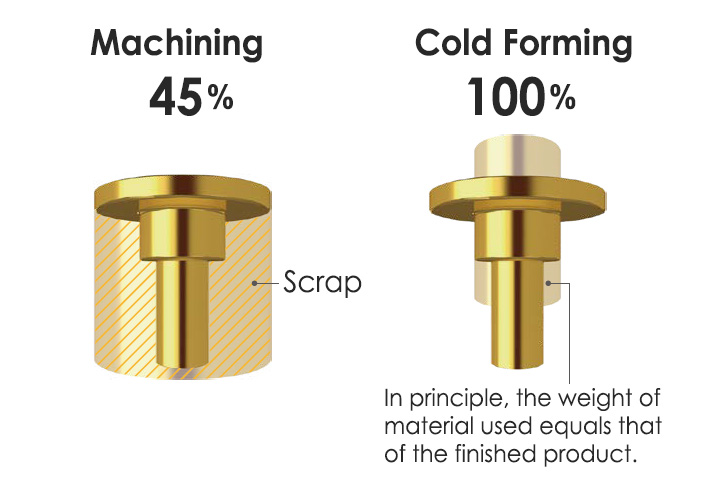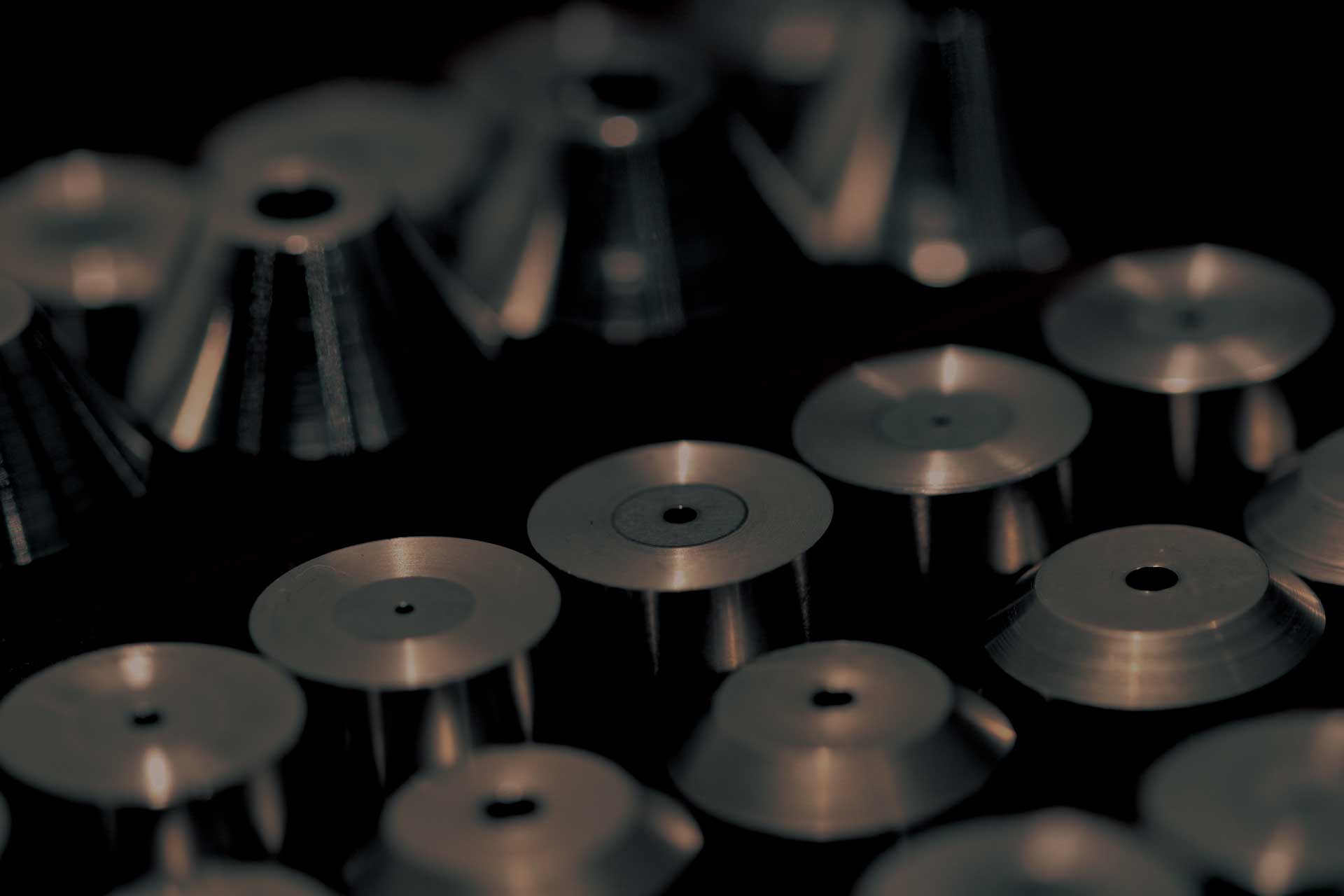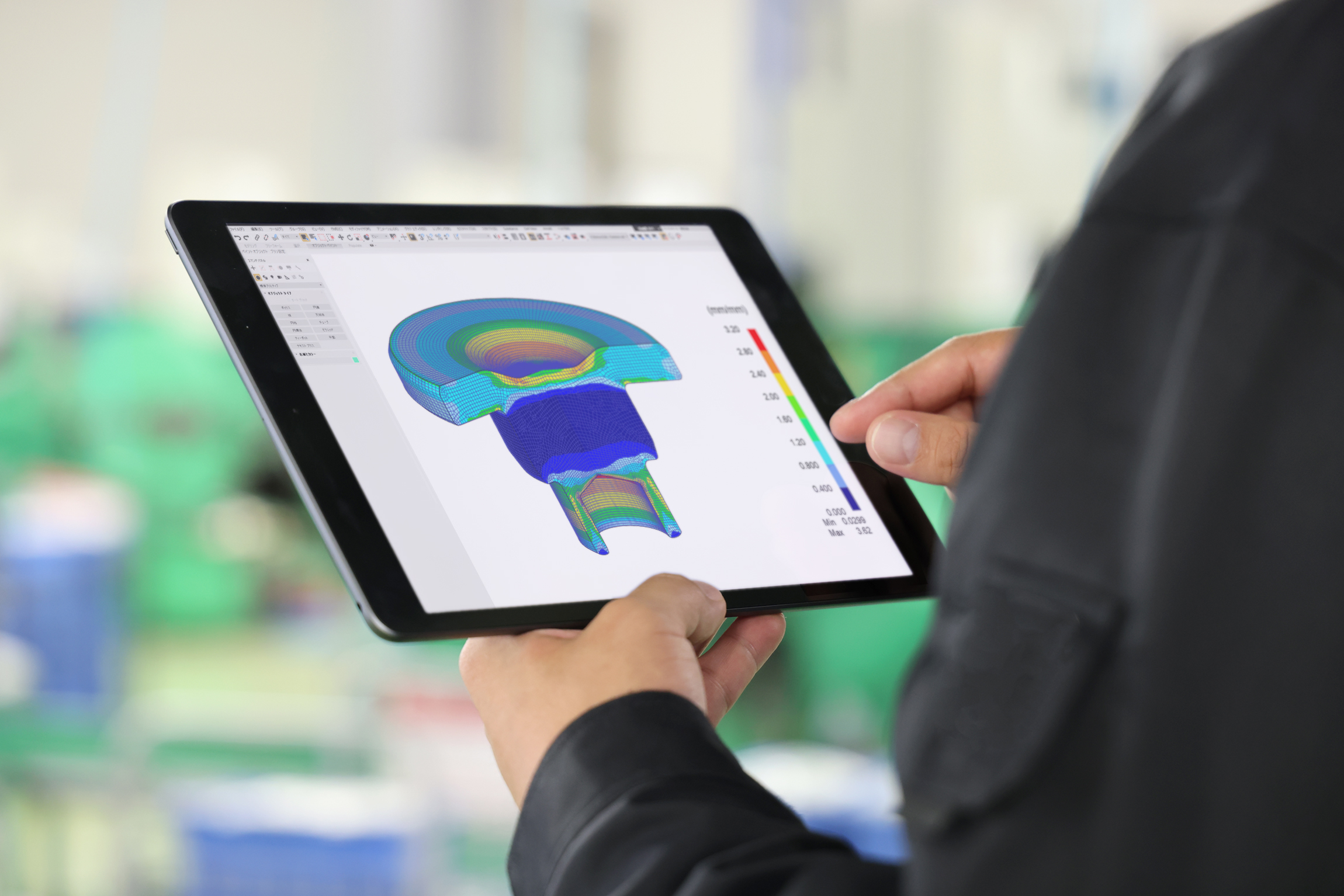Cold Forming Process
Cold Forming : Introduction
Cold forming is a manufacturing process that plastically deforms metal using dies. It allows for high speed production, little to no material waste compared to conventional machining, and creates a stronger end product due to work hardening of the material.

Advantages of Cold Forming

(multi-step rivet example)
High efficiency material utilization (high yield)
The high material utilization of cold forging allows for significant reductions in material waste (scrap) compared to machining for the same geometry.

(multi-step rivet example)
Higher speed, more efficient production
Cold forming allows for high speed manufacturing (around 100 parts/minute) while still maintaining high precision and complex product geometries. No heating of the material is required.

(multi-step rivet example)
Improved product strength by work hardening
Cold forming process design takes fiber flow lines (the crystal structure of metals) into account allowing for stronger more durable parts.

Cost reductions through customized manufacturing processes
If a customer design(toleranc es, geometry, number of components required, etc) is practical using cold forming, significant improvements in part unit cost and reduced process complexity are possible.

Capabilities
Range of Forming Machines
Maximum Length 1.5748 in (40mm)
Wire Diameter
Φ 0.0039 in ~ Φ 0.9842 in
(Φ 0.1 mm ~ Φ 25mm)
Length
0.0394 in ~ 47.24 in
(1 mm ~ 1200 mm)
Control Precision
µin (㎛)
* Depending on client requirements, partial high precision control at the microinch level is possible.
Material
Steel, Aluminum, Stainless Steel, Copper, Brass, Titanium, Kovar, Nickel, Niobium, other Specialty Material

Examples of Cold Headed Products
we have many manufacturing achievements.




